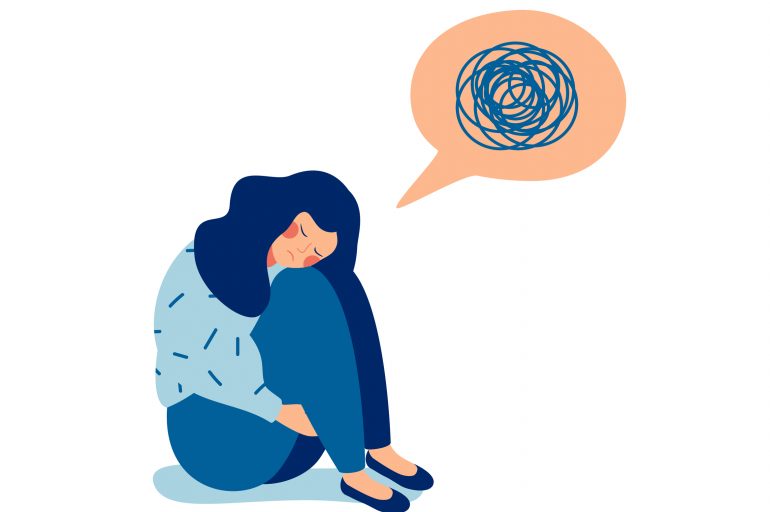
This is a term used by CBT therapist to identify unhelpful or irrational thoughts. They are the thinking errors that can contribute to anxiety, depression, and other mental health issues.
Think of them as the labels that all unhelpful thoughts can be filed under.
For example, the thought “I’m going to fail this test” would be filed under the cognitive distortion label future tripping.
Cognitive distortions are the thoughts that cause people to have a negative or unhelpful worldview. In order to shift into a more balanced worldview, the thoughts that create the negative perspective need to be examined.
Depending on who you ask, there are around 10 – 15 different types of cognitive distortions.
The two most common anxiety cognitive distortions are catastrophizing and future tripping.
Assuming the worst case scenario is definitely going to happen right now, in this moment.
A typical example of this is a panic attack. During a panic attack, people believe they are experiencing a heart attack and are (understandably) fearful they are about to die.
Other examples include being faced with a phobia, not allowing oneself to engage in an OCD ritualized behavior, or the common fear that happens when we arrive late to a meeting or class that started 10 minutes ago.

Assuming the worst case scenario is definitely going to happen at some point in the future.
A typical example of this is social anxiety. Prior to an event, assuming that something “bad” is going to happen and other people will judge you negatively as a result. Often clients will say “I’m worried that when I present during the all hands meeting my mouth will go dry. Everyone will know I’m nervous and weak.”
Sometimes cognitive distortions are created on their own, sometimes they are taught, but ironically they exist because they help to cope with a difficult situation.
An insecurity / unpleasant feeling is triggered, and people unconsciously re-frame the situation with a cognitive distortion to alleviate themselves from the unpleasant feeling – even though it’s not helpful in the long term.
For example, saying “I’m going to die” during a panic attack is a way of understanding a situation, and through this understanding, attempting to create a sense of control. The known will always feel more tolerable than the unknown.
Try to be as aware as possible of your anxiety in the moment. Unless you are in a highly traumatic situation, there’s a good chance that your anxiety is entering unhelpful levels. Some anxiety is absolutely normal and expected, depending on the situation.
With this awareness, ask yourself what you think the worst case scenario is going to be, and if you think it is happening now, or in the future.
Apply a more balanced perspective to the moment. Yes, this is likely a difficult situation, but is it really as scary as your are thinking it is going to be.
If needed, you can help develop a more balanced view by completing a thought record.
Please feel free to reach out to Good Therapy SF if you feel you need more assistance in reducing your anxiety.